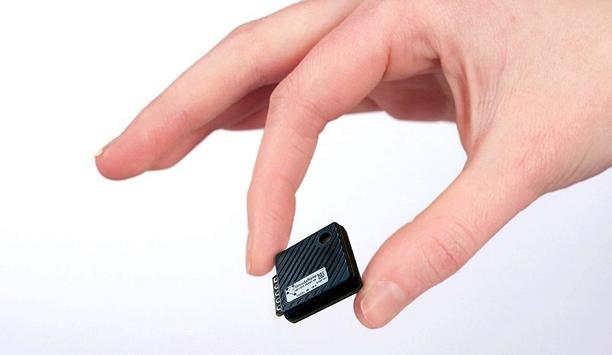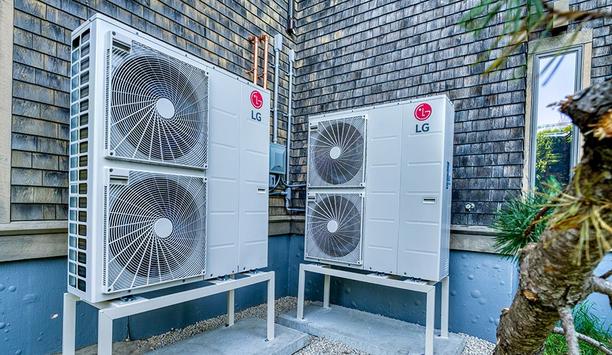Building Management - Editor's Note
HVAC systems typically operate on a schedule. Heating, cooling and ventilation systems start and stop at fixed times of the day, scheduled around when and how a building is used. But, shouldn’t the number of occupants in a building or a room have an impact on how the HVAC system operates? Considering occupancy, when addressing HVAC needs, is an especially timely approach, given that building schedules are less predictable now, since the COVID-19 pandemic changed work patterns, possibly fo...
Society is prioritizing the mitigation of climate change, and new, potentially flammable, low-Global Warming Potential (GWP) refrigerants are a key tool in broadly lowering the rate of global warming. The detection of fugitive (leaking) refrigerant is a new regulation emerging as HVAC equipment manufacturers convert to low-GWP refrigerants. Both A2L and A3 low-GWP refrigerants, while climate-friendly, are flammable. As such, OEMs will have to integrate refrigerant sensors that detect leaked ref...
The concept of district heating refers to a group of customers, or even a whole city, which shares a system providing ambient heat, often using steam or water heated by sources that emit less carbon dioxide. A network of insulated pipes, constructed underground in a community, transports the heat among customers, and various meters and billing systems keep up with how much heat is provided. District heating District heating is seen as an increasingly important option, as municipalities seek to...
A focus of research and development in the HVAC arena has been to develop alternative materials and technologies that requires less energy to function while still providing a benefit to regulate temperature. More passive approaches to regulating temperature offer green benefits and yield new components in systems to regulate temperatures in the future. Here are some examples and a glimpse of what’s to come. Phase-change materials have drawn interest because of their ability to change the...
‘Net zero’ is an unavoidable reality in the continuing fight against climate change. For example, both the United Kingdom and the European Union have set targets of having net-zero greenhouse gas emissions by 2050. These objectives are in line with a commitment to global climate action under the Paris Agreement. Net zero - carbon neutral Net zero refers to the balance between the amount of greenhouse gas produced and the amount removed from the atmosphere. It’s another term f...
High school seniors and their parents weigh multiple factors, when choosing a college or university. In the aftermath of the COVID-19 pandemic, the importance of one factor has shown a marked increase. Indoor air quality (IAQ) is now among the top-three aspects that an applicant and their parents would consider, when choosing a college, according to one survey. Growing awareness of IAQ Growing awareness of IAQ presents an opportunity, as the HVAC industry seeks to serve the higher education ma...
When COVID-19 hit, North Arkansas College had to close its school, and students had to transition from in-person to online learning, which is especially difficult when teaching a trade that is heavily dependent on hands-on training. The HVAC/R program at North Arkansas College, which has existed for over 50 years, typically has an average of 14 to 16 students enrolled each year. HVAC/R program “With the quick transition we had to think outside the box, and so we found a company that had...
The current Biden Administration’s renewed focus on climate change has expedited the phasedown of high-GWP refrigerants, kicked off by the passage of the American Innovation and Manufacturing (AIM) Act, part of the December 2020 COVID stimulus bill. As the AIM Act phase-down schedule progresses, higher-GWP HFC refrigerants, while viable, have the potential to have a limited useful life and ultimately be eliminated. In response to pending changes, Johnson Controls has announced it will use...
Interfacing with HVAC products is increasingly complex. The tiny 1-inch LCD display included on systems does not lend itself to complicated functions. Keeping the HVAC user interface simple limits control options to on/off, mode change or choosing a temperature. Thermostat controls company COTHERM has developed a smartphone app that can be used to control complex functions such as product settings during installation, programming or providing technical information about an HVAC product. Near f...
The COVID-19 pandemic has changed the way the world lives, escalating the need to prioritize health and safety where we live, work, learn and play. As organizations around the world respond to the pandemic, the International WELL Building Institute (IWBI) has leveraged its expertise to help. Impact of building surroundings IWBI is a public benefit corporation focused on deploying “people-first places” to advance a global culture of health. The community has adopted the WELL Buildin...
It’s shaping up to be a long, hot summer for HVAC contractors and their customers. Disruptions in the nationwide supply chain that began during the COVID-19 pandemic still have not been resolved. Shutdowns last summer played havoc with the supply of parts, and suppliers are still playing catch up, as raw materials remain scarce. Furthermore, prices are going up among some components and key raw materials. Waiting times for parts can run into weeks or even months. Supply shortages of HVAC...
Artificial Intelligence (AI) is an emerging tool for a long list of applications, including the ability to analyze and ensure optimum performance of an HVAC system. Emerson’s Sensi Predict smart HVAC solution is an example of how AI can boost the capabilities of HVAC. It has been recognized with a Silver Edison Award in the Innovative Services – AI category. Sensi Predict smart HVAC solution Sensi Predict combines inputs from 10 sensors in an HVAC system and analyzes the performanc...
The term ‘robotics’ refers to technology or machines that substitute or replicate human actions. ‘Human augmentation’ is another term, referring to the use of technology to reduce strain and fatigue as workers perform strenuous tasks over long periods of time. Hilti Group has introduced robots and semi-automated technologies to the construction trades, including HVAC. The role of these technologies in the HVAC market is to increase efficiency and accuracy, reduce costs,...
What do customers want from their HVAC company? It’s a challenging question, and the answers reveal a path to a more successful and customer-centric company. There are numerous articles written that offer consumers advice on choosing an HVAC company. In the simplest terms, wouldn’t it be possible to ‘reverse engineer’ that advice to provide a roadmap to guide HVAC companies in how to succeed? Addressing consumer concerns Often, consumers’ concerns surround whether...
Incorporating cool and dry outdoor air into commercial HVAC systems can save money and energy, while causing less wear-and-tear on cooling systems. An economizer is a device that works alongside rooftop HVAC systems to augment the system with outdoor air, in order to provide what has become known as ‘free cooling’. Economizers Economizers introduce low-temperature or low-enthalpy outdoor air into a building to reduce or eliminate mechanical cooling, depending on outdoor air conditi...
Membranes made of an organic material called polyimides, which are then treated to become hydrophilic, provide a promising approach to developing dehumidifiers that could eventually bring down the price of HVAC systems and make them more environmentally friendly. Research at Texas A&M University’s College of Engineering describes how the polyimide material could be used to dry environmental air using less energy. Triggering Hydrolysis Polyimides are made of chains of repeating, ring...
The most likely scenario for the next 12 months in the United Kingdom is far lower risk of serious COVID-19 illness due to the vaccine. However, there will be big swings in R rates, and there is uncertainty about how effective vaccines will be against COVID variants. The ‘R’ rate is the number of people one infected person will pass a virus on to, on average. As the scenario plays out, and more companies open for business, issues of indoor air quality will continue to be top of mind...
The connectivity of the Internet of Things (IoT) provides new tools to monitor the well-being of an HVAC system, to provide instant alerts to any operational problems and even to predict when problems are likely to occur. Being alert to early warning signs of a problem enables deployment of less-expensive fixes before the problem escalates. predictive analytics Remote monitoring and predictive analytics of HVAC systems have been even more valuable during the time of the COVID-19 pandemic, when...
The demographics of the HVAC workforce are changing and more women are being welcomed into the HVAC industry in a wider variety of roles. In part, the changes are because of necessity as Baby Boomers retire from the workforce and leave a labor and skills gap to be filled. HVAC commercial service business, HB McClure Company, based out of Harrisburg, Pennsylvania, is embracing change and encouraging more women to consider a career in the HVAC workspace. The company’s female employees are h...
The computing power we know as the Internet actually resides in millions of data centers that house rows and rows of computer servers. And each data center represents a unique HVAC challenge: How to keep the equipment cool, the air pure and the humidity low. Providing the ideal operating conditions for a room full of computers requires the best that the HVAC market can offer. Data centers come in all shapes, sizes and configurations. Some are huge facilities that serve the needs of giants...
If history truly repeats itself, might we learn lessons from the past – even lessons about managing a novel coronavirus that upends our way of life and changes the world forever? The most commonly cited parallel to the COVID-19 pandemic is the Spanish flu pandemic of 1918. Both diseases are caused by viruses that had not been seen before. In both cases, no one had immunity to a highly infectious germ that was spread through respiratory droplets. Both outbreaks occurred in multiple waves o...
The amount of carbon dioxide (CO2) in a poorly ventilated indoor space depends on the number of people who exhale their breath in that space. And aerosol virus contained in exhaled breath is a common way that COVID-19 germs are spread. Therefore, might the CO2 level in a given space serve as an approximation of the likelihood of coronavirus spread? Broadly speaking, poor ventilation of indoor spaces can increase the likelihood of aerosol transmission, and a higher CO2 level is an indicator of i...
Data is playing an increasingly important role in smart buildings. Analysis of building system data is guiding an expansion of capabilities in the smart building environment, making building systems - including HVAC - more efficient, effective and smarter. The growth of intelligence in the HVAC market was among the more prominent industry trends in 2020. This article will revisit some of the year’s most popular articles on HVACinformed.com that focused on the trend toward more intelligent...
The year 2020 will forever be remembered for the global pandemic that transformed almost every aspect of our lives. COVID-19 impacted the HVAC market, as it did most other business sectors. However, HVAC also rose to a new level of prominence at the center of the pandemic, both as a potential cause of virus spread and as a source of solutions to fight the virus. This article will highlight the intersection of HVAC and COVID-19 based on articles published during 2020 at HVACinformed.com. Impac...
Sustainability and environmental impact are core issues of the HVAC market in 2020 or any year. During the last year, HVACinformed.com has addressed multiple facets of sustainability in some of our most popular articles. This retrospective will highlight some of the sustainability articles published during 2020 at HVACInformed.com. An HVACInformed.com Expert Panel Roundtable commented on various aspects of sustainability, including the responsibility of HVAC manufacturers to develop more susta...
Artificial intelligence (AI) provides a tool to deliver significant savings and dramatically reduce carbon emissions, enabling a self-operating building. Because of AI’s ability to be proactive in buildings, rather than reactive, a 25% reduction in total energy costs is possible, along with a 20-40% decrease in carbon footprint. "Our mission is to fight climate change by bringing innovation and cutting-edge artificial intelligence to the built environment, making buildings smarter and gre...
Building Information Management (BIM) software creates an intelligent 3D model of a design or building project and provides documentation, coordination and simulation through each step of the project’s lifecycle, from planning to design, building to operation and even maintenance. Use of a 3D model enables stakeholders across various disciplines to visualize and understand every detail of a project before it is built, makes it easier to document a project, and facilitates communication amo...
Newer buildings tend to be designed to be ‘green’, but what about older existing buildings, which still represent the largest share of environmental impact? There is more work to be done in the retrofit sector; and improving environmental performance of older buildings often involves ‘deep retrofits’ that are costly and impact multiple factors inside a building. In the COVID-19 era, there is also growing concern about needs such as circulating outside air, increasing hum...
Leveraging Radiant And Hydronics To Help Achieve Decarbonization Goals
DownloadSealed Connectors In Harsh Environments
DownloadPowering And Cooling Next Generation Data Centers
DownloadDebunking Myths To Promote A Bright Future For Heat Pumps
DownloadOptimizing Comfort: The Ultimate HVAC Component Guide
Download































